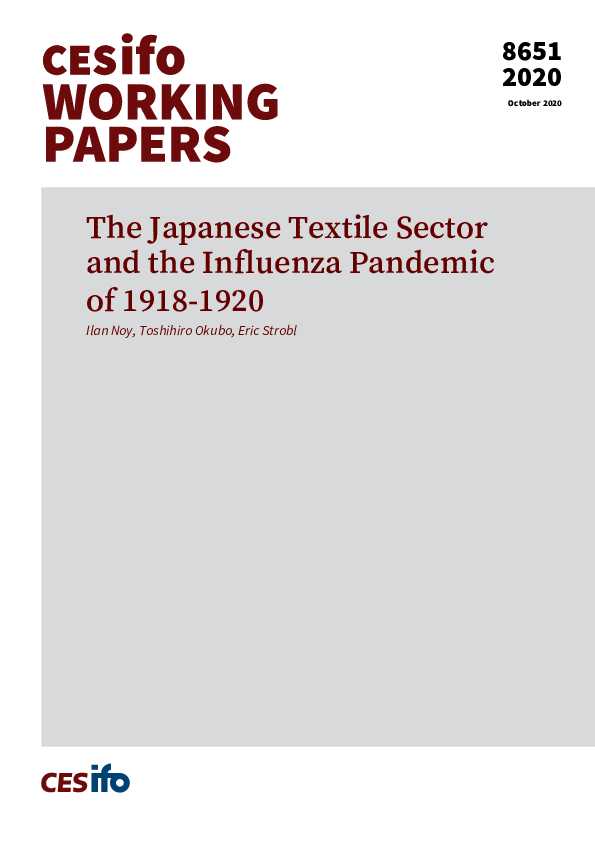The Japanese Textile Sector and the Influenza Pandemic of 1918-1920
CESifo, Munich, 2020
CESifo Working Paper No. 8651

The COVID-19 pandemic has brought into sharp relief the connection between the epidemiology of a virus, the structure of the economy and society that becomes exposed to it, and the actions chosen by government and by individuals and communities to combat it or ameliorate its economic impact. Surprisingly, there has not been much research on the economy of the 1918-1920 influenza pandemic, even though it likely was the highest mortality event in the 20th century, more lethal than the two World Wars. This paper focuses on Japan, which as a minor participant, was not directly affected by World War I. We exploit the diversity of experiences with the pandemic and its attendant policy responses across Japanese prefectures; and investigate the importance of the pandemic (measured by excess mortality), and of non-pharmaceutical policy interventions (NPIs) in determining the economic impact of the pandemic. We do so by focusing on the production and employment in the textile sector, given the availability of data and the general importance of the sector for emerging economies (as Japan was at the time). We investigate the role of NPIs in ameliorating the economic costs for the sector during the pandemic years (1918-1920), and indeed find that the implemented NPIs were effective in ameliorating the pandemic’s economic consequences, rather than worsening them. In this case, there was no trade-off between money and life, but rather the two were complimentary.
Fiscal Policy, Macroeconomics and Growth
Resources and Environment